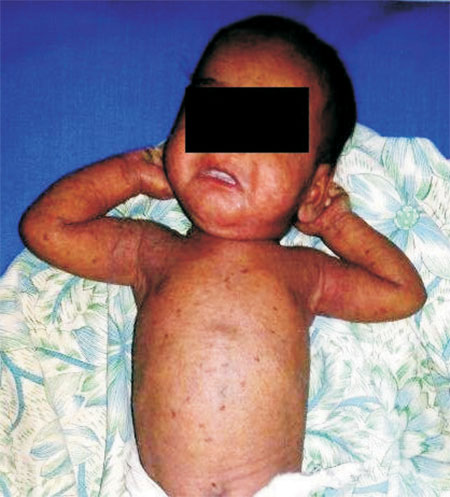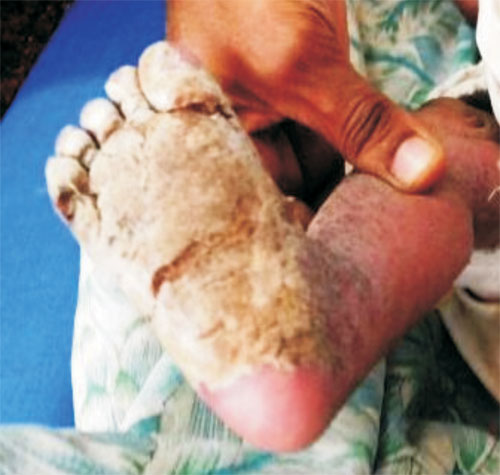A 4-month-old HIV-positive infant staying
at an orphanage presented with papular lesions all over the
body (Fig. 1) and crusted scaly lesions over
the palms and soles over a period of two months (Fig.
2). Several other inmates had also developed similar
lesions. A clinical diagnosis of crusted scabies was made
and all the inmates of the orphanage, including this
patient, were treated with 5% permethrin.
 |
|
Fig. 1 Popular lesions of
scabies.
|
 |
|
Fig. 2 Crusted scaly
lesions over sole.
|
Crusted or Norwegian Scabiesis is seen in
an immunocompromised host. AIDS, leprosy, lymphoma, Down
syndrome and being elderly are risk factors for crusted
scabies. Crusted scabies begins with poorly defined
erythematous patches that quickly develop hyperkeratotic
plaques diffusely over palmar and plantar regions. Itching
may be minimal or absent. Differential diagnosis for crusted
scabies include seborrhoeic dermatitis (greasy, scaly,
erythematous papular dermatitis usually involving the face,
neck, retroauricular areas, axillae and diaper area),
Langerhans cell histiocytosis (associated with localized or
generalized lymphadeno-pathy, hepatosplenomegaly, chronic
ear discharge, pulmonary infiltrates and bone lesions),
psoriasis (demarcated scaly lesions, pinpoint bleeding on
removal of a scale, Koebner response and characteristic nail
changes), and ichthyosis vulgaris (scaly lesions
predominantly in the extensor aspects of the extremities,
keratosis pilaris and hyperkeratosis of the palms and
soles). Demonstration of the mites in skin scraping
differentiates crusted scabies from other conditions.

